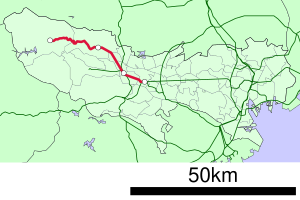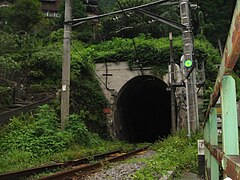Ōme line
| Ōme line | |||||||||||||||||||||||||||||||||||||||||||||||||||||||||||||||||||||||||||||||||||||||||||||||||||||||||||||||||||||||||||||||||||||||||||||||||||||||||||||||||||||||||||||||||||||||||||||||||||||||||||||||||||||||||||||||||||||||||||||||||
|---|---|---|---|---|---|---|---|---|---|---|---|---|---|---|---|---|---|---|---|---|---|---|---|---|---|---|---|---|---|---|---|---|---|---|---|---|---|---|---|---|---|---|---|---|---|---|---|---|---|---|---|---|---|---|---|---|---|---|---|---|---|---|---|---|---|---|---|---|---|---|---|---|---|---|---|---|---|---|---|---|---|---|---|---|---|---|---|---|---|---|---|---|---|---|---|---|---|---|---|---|---|---|---|---|---|---|---|---|---|---|---|---|---|---|---|---|---|---|---|---|---|---|---|---|---|---|---|---|---|---|---|---|---|---|---|---|---|---|---|---|---|---|---|---|---|---|---|---|---|---|---|---|---|---|---|---|---|---|---|---|---|---|---|---|---|---|---|---|---|---|---|---|---|---|---|---|---|---|---|---|---|---|---|---|---|---|---|---|---|---|---|---|---|---|---|---|---|---|---|---|---|---|---|---|---|---|---|---|---|---|---|---|---|---|---|---|---|---|---|---|---|---|---|---|---|---|---|---|---|---|---|---|---|---|---|---|---|---|---|---|---|
|
Class E233-0 multiple unit in Sawai
| |||||||||||||||||||||||||||||||||||||||||||||||||||||||||||||||||||||||||||||||||||||||||||||||||||||||||||||||||||||||||||||||||||||||||||||||||||||||||||||||||||||||||||||||||||||||||||||||||||||||||||||||||||||||||||||||||||||||||||||||||
| Route length: | 37.2 km | ||||||||||||||||||||||||||||||||||||||||||||||||||||||||||||||||||||||||||||||||||||||||||||||||||||||||||||||||||||||||||||||||||||||||||||||||||||||||||||||||||||||||||||||||||||||||||||||||||||||||||||||||||||||||||||||||||||||||||||||||
| Gauge : | 1067 mm ( cape track ) | ||||||||||||||||||||||||||||||||||||||||||||||||||||||||||||||||||||||||||||||||||||||||||||||||||||||||||||||||||||||||||||||||||||||||||||||||||||||||||||||||||||||||||||||||||||||||||||||||||||||||||||||||||||||||||||||||||||||||||||||||
| Power system : | 1500 V = | ||||||||||||||||||||||||||||||||||||||||||||||||||||||||||||||||||||||||||||||||||||||||||||||||||||||||||||||||||||||||||||||||||||||||||||||||||||||||||||||||||||||||||||||||||||||||||||||||||||||||||||||||||||||||||||||||||||||||||||||||
| Top speed: | 85 km / h | ||||||||||||||||||||||||||||||||||||||||||||||||||||||||||||||||||||||||||||||||||||||||||||||||||||||||||||||||||||||||||||||||||||||||||||||||||||||||||||||||||||||||||||||||||||||||||||||||||||||||||||||||||||||||||||||||||||||||||||||||
| Dual track : | Tachikawa - Higashi-Ōme | ||||||||||||||||||||||||||||||||||||||||||||||||||||||||||||||||||||||||||||||||||||||||||||||||||||||||||||||||||||||||||||||||||||||||||||||||||||||||||||||||||||||||||||||||||||||||||||||||||||||||||||||||||||||||||||||||||||||||||||||||
| Society: | JR East | ||||||||||||||||||||||||||||||||||||||||||||||||||||||||||||||||||||||||||||||||||||||||||||||||||||||||||||||||||||||||||||||||||||||||||||||||||||||||||||||||||||||||||||||||||||||||||||||||||||||||||||||||||||||||||||||||||||||||||||||||
|
|||||||||||||||||||||||||||||||||||||||||||||||||||||||||||||||||||||||||||||||||||||||||||||||||||||||||||||||||||||||||||||||||||||||||||||||||||||||||||||||||||||||||||||||||||||||||||||||||||||||||||||||||||||||||||||||||||||||||||||||||
The Ōme line ( Japanese青梅 線Ōme-sen ) is a railway line on the Japanese island of Honshū , which is operated by the JR East railway company . It is a branch line of the Chūō main line , which connects the cities of Tachikawa , Ōme and Okutama in the far west of Tokyo Prefecture .
The scenic stretch of route between Ōme and Okutama is marketed by JR East under the name Tokyo Adventure Line ( 東京 ア ド ベ ン チ ャ ー ラ イ ン ).
description
The route laid in Cape gauge (1067 mm) is electrified with 1500 V DC . Over a length of 32.7 km, it serves 25 train stations and stops, and the maximum speed is 85 km / h. The southern starting point is Tachikawa station , a major traffic junction. Here the route branches off from the Chūō main line to the west. The following section to Nishi-Tachikawa is in two parts: While the actual Ōme line leads in a straight line there, the so-called Ōme abbreviation makes a little swivel to the south. The latter is primarily used to establish a direct connection from the Chūō main line for trains going out of town (from platform 6) without having to cross this busy route in Tachikawa.
Reunited, the Ōme line turns increasingly to the northwest, following the Tama on the left side of the valley. In Haijima it crosses with the Hachikō line ; You can also switch to the Itsukaichi Line and the Seibu Haijima Line here . It is double-tracked to Higashi-Ōme station, after which it has only one track. In Ōme , the route reaches the Okutama Mountains and leads through increasingly mountainous terrain. There are several tunnels in this area, the longest being the Hikawa tunnel at 1270 m. Mitake train station is of great touristic importance . Continuing to follow the upper reaches of the Tama, the route finally reaches the terminus of Oku-Tama .
Trains
In local traffic, through trains from one end of the Ōme line in Tachikawa to the other end in Oku-Tama are relatively rare, instead in Zweitme an operational division is usually made. To the south-east of it, trains run five times an hour during the day; during rush hour, the train sequence is reduced to up to two minutes. Often the local trains go beyond Tachikawa as an express train on the Chūō rapid transit line to Shinjuku and Tokyo . There are also several free connections from the Chūō rapid transit line via the Ōme line and the Itsukaichi line to Musashi-Itsukaichi . In the relatively sparsely populated upper part of the Tama Valley west of Ōme, the timetable is 30 to 45 minutes, depending on the time of day.
During the week, the Ōme express train is offered, which runs once in the morning with only four stops from Ōme to Tokyo and in the evening from Tokyo back to Ōme. On weekends and holidays there are three pairs of express trains called Holiday Rapid Okutama / Akigawa , which connect Tokyo with the Tama region. In Haijima , the ten-car trains are separated (or reassembled) into two units, with four cars running as Holiday Rapid Akigawa to Musashi-Itsukaichi and the remaining six cars running as Holiday Rapid Oku-Tama to Oku-Tama.
photos
history
Main line
The railway company Ōme Tetsudō ( 青梅 鉄 道 ) received on June 21, 1892 the concession for the construction of a local railway line along the upper reaches of the river Tama , with a gauge of 762 mm. On November 19, 1894, it opened the first section from Tachikawa via Haijima to Ōme . This was followed by the opening of the section between Ōme and Hinatawada on December 28, 1895. However, this was used exclusively for freight traffic for over two years; the inclusion of passenger traffic took place on March 10, 1898. To the elaborate transhipment of goods in Tachikawa avoid the entire Ōme Line was the usual on February 18, 1908 Cape gauge (1,067 mm) umgespurt .
On April 1, 1914, the Hinatawada station was relocated to its current location, in preparation for the planned extension to Futamatao. This was delayed because of the First World War and was only completed five and a half years later on January 1, 1920. On April 25, 1925, the Tachikawa – Futamatao line was electrified with 1200 V DC (increased to 1500 V in 1930). Almost two years later, on February 9, 1927, a short branch line from Fussa to Fussa-Kawahara went into operation. The railway company renamed itself on May 3, 1929 in Ōme Denki Tetsudō ( 青梅 電 気 鉄 道 ); this should emphasize the electrical operation. On September 1 of the same year, it extended the route from Futamatao to Mitake , with this section being electrified from the start.
During the Pacific War , the Japanese state strove to bring under its control various private railways of strategic importance that had emerged after the first wave of nationalization in 1906/07 . According to an ordinance issued in 1941, a total of 22 railway companies were affected by the nationalization, including the Ōme Denki Tetsudō , whose railway line passed into state ownership on April 1, 1944 and was given its current name. Another railway company, Okutama Denki Tetsudō ( 奥多摩 電 気 鉄 道 ), founded in June 1937 , was nationalized on the same day. They had started to build a connecting line from Mitake to Oku-Tama . The Ministry of Transport and Communications completed it and put it into operation on July 1, 1944. From April 1, 1944, the Tachikawa – Nakagama section was open to two tracks, and from May 15, 1946, the Nakagami – Haijima section was also open.
The Japanese State Railways introduced connections between Ōme and Tokyo without changing trains on July 27, 1949, and also in the opposite direction on October 1, 1950. On December 10, 1959, it closed the branch line to Fussa-Kawahara. The state railway continued to expand the line: the second track extended to Fussa on March 28, 1961, to Ozaku on December 12, 1962 and to Higashi-Ōme on May 7, 1962. As part of the privatization of the state railways, the Ōme line went into the possession of the new company JR East on April 1, 1987 , while JR Freight took over the freight traffic. The new owner significantly expanded the range, in particular the number of express trains increased.
Ōme abbreviation
The Asano- Zaibatsu , which was owned by the neighboring railway companies Itsukaichi Tetsudō and Nambu Tetsudō , wanted to let freight trains run from the Nambu line to the Ōme line in Tachikawa station without having to cross the tracks of the state railway. First opened the Itsukaichi Tetsudō on July 13, 1930, the section between Tachikawa and Musashi-Kaminohara. Further construction was delayed by more than a decade for financial reasons. In 1940, Itsukaichi Tetsudō went into the Nambu Tetsudō, which in turn was nationalized on April 1, 1944. The government viewed the shortcut as an investment important to the war effort and had it completed. The missing section between Musashi-Kaminohara and Nishi-Tachikawa went into operation on October 11, 1944. Today the line is primarily used to create a direct connection from the Chūō main line for trains going out of town in the south (platform 6) without having to cross the busy Chūō line in Tachikawa .
List of train stations
HR = Holiday Rapid; To = Tokkyū (Rapid)
| Surname | km | MR | To | Connecting lines | location | place | |
|---|---|---|---|---|---|---|---|
| JC19 | Tachikawa ( 立 川 ) | 0.0 | ● | ● |
Chūō Main Line ( Chūō Rapid Train Line ) Nambu Line Tachikawa-Kita and Tachikawa-Minami stations: Tama monorail |
Coord. | Tachikawa |
| JC51 | Nishi-Tachikawa ( 西 立 川 ) | 1.9 | ● | ǀ | Coord. | ||
| JC52 | Higashi-Nakagami ( 東 中 神 ) | 2.7 | ǀ | ǀ | Coord. | Akishima | |
| JC53 | Nakagami ( 中 神 ) | 3.6 | ǀ | ǀ | Coord. | ||
| JC54 | Akishima ( 昭 島 ) | 5.0 | ǀ | ǀ | Coord. | ||
| JC55 | Haijima ( 拝 島 ) | 6.9 | ● | ● |
Hachikō Line Itsukaichi Line Seibu Haijima Line |
Coord. | |
| JC56 | Ushihama ( 牛 浜 ) | 8.6 | ǀ | ǀ | Coord. | Fussa | |
| JC57 | Fussa ( 福 生 ) | 9.6 | ● | ǀ | Coord. | ||
| JC58 | Hamura ( 羽 村 ) | 11.7 | ǀ | ǀ | Coord. | Hamura | |
| JC59 | Ozaku ( 小 作 ) | 14.1 | ǀ | ǀ | Coord. | ||
| JC60 | Kabe ( 河 辺 ) | 15.9 | ǀ | ● | Coord. | Ōme | |
| JC61 | Higashi-Ōme ( 東 青梅 ) | 17.2 | ǀ | ǀ | Coord. | ||
| JC62 | Ōme ( 青梅 ) | 18.5 | ● | ● | Coord. | ||
| JC63 | Miyanohira ( 宮 ノ 平 ) | 20.6 | ǀ | Coord. | |||
| JC64 | Hinatawada ( 日 向 和田 ) | 21.4 | ǀ | Coord. | |||
| JC65 | Ishigamimae ( 石 神 前 ) | 22.4 | ǀ | Coord. | |||
| JC66 | Futamatao ( 二 俣 尾 ) | 23.6 | ǀ | Coord. | |||
| JC67 | Ikusabata ( 軍 畑 ) | 24.5 | ǀ | Coord. | |||
| JC68 | Sawai ( 沢 井 ) | 25.9 | ǀ | Coord. | |||
| JC69 | Mitake ( 御 嶽 ) | 27.2 | ● | Coord. | |||
| JC70 | Kawai ( 川 井 ) | 30.0 | ǀ | Coord. | Okutama | ||
| JC71 | Kori ( 古 里 ) | 31.6 | ǀ | Coord. | |||
| JC72 | Hatonosu ( 鳩 ノ 巣 ) | 33.8 | ǀ | Coord. | |||
| JC73 | Shiromaru ( 白 丸 ) | 35.2 | ǀ | Coord. | |||
| JC74 | Oku-Tama ( 奥多摩 ) | 37.2 | ● | Coord. | |||
Web links
- JR East route network (PDF, 1.2 MB)
Individual evidence
- ↑ 東京 ア ド ベ ン チ ャ ー ラ イ ン 始 動! (PDF, 546 kB) JR East , September 14, 2018, accessed March 8, 2020 (Japanese).
- ↑ a b JR 時刻表 2019 年 3 月 号 (JR timetable March 2019). Kōtsū shinbunsha, Tokyo 2019.
- ↑ 鉄 道 布設 免 許 状 下 付. In: Official Gazette. National Parliamentary Library , June 29, 1892, accessed February 24, 2020 (Japanese).
- ↑ 運輸 開業 免 許 状 下 付. In: Official Gazette. National Parliamentary Library, November 22, 1894, accessed February 24, 2020 (Japanese).
- ↑ a b c d e Sone Satoru (Ed.): 週刊 歴 史 で め ぐ る 鉄 道 全 路線 国 鉄 ・ JR . tape 38 . Asahi Shimbun shuppan, Tokyo 2010, p. 10-11 .
- ↑ 地方 鉄 道 運輸 開始. In: Official Gazette. National Library of Parliament, January 20, 1920; accessed February 24, 2020 (Japanese).






